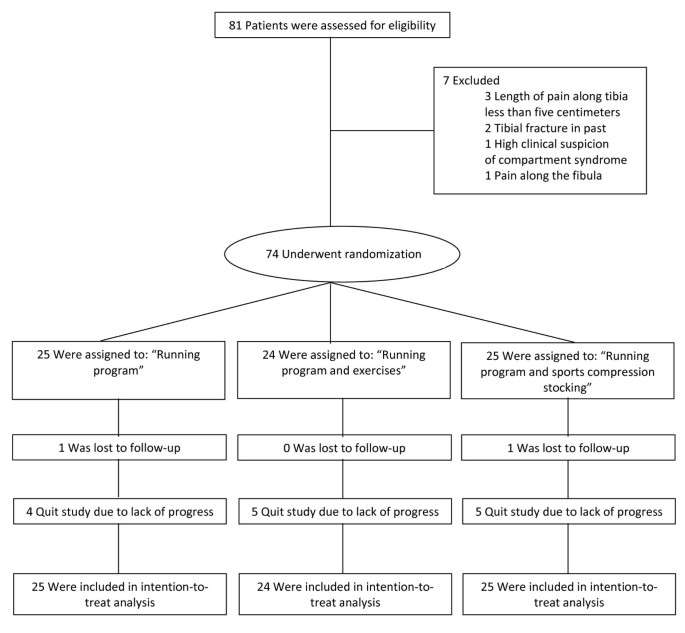 Mental health is undoubtedly an important topic; however, many people find it uncomfortable to talk about it.
Mental health is undoubtedly an important topic; however, many people find it uncomfortable to talk about it.
Mental health includes your emotional health, your psychological health, and your social well-being.
The state of your mental health determines how you handle stress, how you relate to others, and how you make choices in life.
Mental health is critically important at every stage of life from childhood to adolescence to adulthood. Mental health problems can affect one’s thinking, moods, and behaviors.
There is a myriad of factors that can contribute to mental health issues such as:
- Biological factors like brain chemistry or genes.
- Experiences in life, such as abuse or trauma.
- Family history of mental health issues or problems.
Mental health activities and interventions are designed to help someone cope.
There are many interventions and activities that can make this process a little more approachable from Cognitive Behavioral Therapy (CBT) to Mindfulness.
Before you continue, we thought you might like to download our three Positive Psychology Exercises for free. These science-based exercises will explore fundamental aspects of positive psychology including strengths, values, and self-compassion, and will give you the tools to enhance the wellbeing of your clients, students, or employees.
What is Mental Health Activities?
Mental health activities are things you can do to improve your mental health. Engaging in wellness activities can have a positive effect on your health and wellness, as well as your sense of inner peace.
Mental health activities might include mindfulness or meditation, Cognitive Behavioral Therapy worksheets, Psychotherapy worksheets, and even mood trackers.
5 Examples of Mental Health Techniques and Skills
Cognitive Therapy or Cognitive Behavioral Therapy (CBT) works by helping you identify and change the elements of your belief system and the cognitive distortions that can lead to those automatic negative thoughts or ANTS.
ANTS are those automatic negative thoughts or subconscious thoughts that occur in response to stimuli. These thoughts are often irrational and self-defeating.
A few CBT techniques include:
- Identifying Cognitive Distortions
- Cognitive Restructuring and Reframing
- Keeping a Thought Record
- The Worry Tree
- Chunking and Problem-Solving
1. Identifying Cognitive Distortions
Cognitive distortions are irrational thoughts that can influence your emotions.
They are biased ways of thinking about yourself and the world around you. While everyone experiences cognitive distortions to a small degree, some people take it to the extreme.
These irrational thoughts and beliefs (basically distortions) can lead to problematic emotional states and behavior. This might include anxiety, low self-esteem, depression, and even conflicts in relationships.
Taking steps to become more aware of cognitive distortions can help you shift your thinking to more rational and objective thoughts whenever possible. Thinking more rationally tends to lead to more positive emotional and behavioral experiences.
According to Dr. David Burns, MD (Burns, 1989) in the book “The Feeling Good Handbook,” there are at least ten different cognitive distortions that one should be aware of.
- All or Nothing Thinking: This occurs when someone sees things in terms of black-and-white categories. For this type of thinker, anything short of perfection is a failure.
- Overgeneralization: This occurs when you view a single event as a never-ending pattern of defeat. Those who overgeneralize might also make broad interpretations from a single event like feeling awkward in a job interview leading you to falsely believe that you are always awkward.
- Mental Filter: A mental filter is when you pick out a single negative detail and dwell on it to the point of exclusivity. As a result, your vision of reality becomes darkened, like a drop of ink discoloring an entire beaker of water.
- Disqualifying the Positive: This occurs when you reject positive experiences and insist they “don’t count” for some reason or other. Thinking this way helps you maintain a negative belief that is contradicted by your everyday experiences.
- Jumping to Conclusions: When you jump to conclusions, you don’t think things through, and you react impulsively. This might manifest as mind-reading, or concluding someone is reacting negatively toward you without checking it out or fortune-telling or predicting something will turn out bad.
- Magnification: This is also known as catastrophizing or minimization. This occurs when you exaggerate or minimize the importance of events. For example, someone might mistakenly believe that their achievements are not important, or their mistakes are incredibly damaging.
- Emotional Reasoning: This occurs when you assume that your negative emotions reflect the way things are. For example, you might say to yourself that you feel like a lousy friend; therefore, you must be a bad friend.
- Should Statements: These occur when you believe that things should be a certain way like you should always be friendly.
- Labeling and Mislabeling: This is an extreme form of an overgeneralization, and it happens when you attach a negative label to yourself, such as thinking you are a loser.
- Personalization: This occurs when you believe you are responsible for events outside of your control. You might also see yourself as the cause of some adverse external event, which you were not primarily responsible for.
The Putting Thoughts on Trial Worksheet is a Cognitive Behavioral Therapy activity focused on the logical examination of irrational thoughts. In this exercise, the client acts as his own advocate as he puts himself in different positions.
Just like in a real courtroom, the client is forced to recognize that he or she can only work with hard cold facts.
This exercise is extremely valuable because it helps someone see things from many different perspectives.
As a therapist, you can help by challenging evidence that you believe breaks the rules. You can also offer up evidence that your client may have missed.
2. Cognitive Restructuring and Reframing
Cognitive restructuring and reframing is a psychological technique that allows you to actively reprogram your brain. In short, if you change your beliefs, you create real, physical changes in your brain.
According to a study done with those who drive cabs in London (Maguire, Woollett, & Spiers, 2006) humans have a remarkable capacity to acquire and use knowledge of a large complex city to navigate within it.
The cab drivers brain scans were compared with the scans of normal brains with average people. The study found the section of the brain used for mapping and memorizing routes was more developed in those who drive cabs, and also physically bigger.
The Socratic Question worksheet is a great tool to help you reframe your thoughts, which are often a running dialogue. Our thoughts determine how we feel and how we act, so taking the time to challenge them can be very helpful.
Negative thinking strengthens the negative part of our mind, whereas positive thinking strengthens the positive.
The brain is basically like a muscle with many different parts. The parts you use more often grow bigger and stronger.
3. Thought Record
Keeping a Thought Record is another excellent tool to help change thoughts. Thought records are used to teach clients about the interactions between thoughts, feelings, and behaviors, and is used for clients to record their own experiences. In terms of cognitive restructuring, keeping a thought record is a great place to begin challenging irrational thoughts.
The Thought Record worksheet offers plenty of space for your clients to record their thoughts, feelings, and behaviors.
4. The Worry Tree
The Worry Tree is designed to help you think differently when it comes to things that worry you. As you dive deeper and deeper into what is going on, as it pertains to your worry, you start to get a new perspective.
The Worry Tree is a simple tool developed by Butler and Hope (1995) to help focus the attention and help people make better decisions. It can also stop someone from turning a worry into a catastrophe.
The further you break the worry down, the more clearly you can see other outcomes and change your focus of attention.

This Worry Tree was accessed via getselfhelo.co.uk/worrytree.htm
5. Chunking and Problem-Solving
Chunking is breaking large amounts of information down into smaller pieces, and it is a great problem-solving technique. It refers to the process of grouping separate pieces of information together, but it can also be used to solve problems. It is also a great way to stand back and look at the bigger picture.
By chunking down, you can ask yourself how you did something or why you think something happened.
Chunking also allows you to analyze what happened when and if it will happen again so that you can then begin to see the underlying cause.
You can also chunk up and ask yourself what something means or what you were trying to achieve.
- Chunking up refers to moving to a more general or abstract piece of information.
- Chunking down means moving to more specific or detailed information.
Taking the time to work through a Problem Solving worksheet can be very helpful when it comes to breaking problems down.
What are Mental Health Interventions?
Sometimes a mental health issue will escalate and require an intervention. A mental health intervention can help someone through tragedy, trauma, or through any underlying untreated psychiatric disorder.
Ideally, a therapist or intervention specialist of some kind is involved in helping convince someone to get mental health or medical treatment.
A mental health intervention team may consist of many different experts, including a therapist, social worker, psychiatrist, or psychologist.
The overall goal is to help intervene before a situation gets into a crisis mode.
The Types of Mental Health Interventions (Incl. List)
According to the Foundations Recovery Network, a foundation that specializes in the dual diagnosis of substance addiction and mental health disorders, the top four types of interventions include:
- Simple intervention
- Classical intervention
- Family system intervention
- Crisis intervention
A simple intervention involves a single family member, but it can also include a professional of some sort.
This occurs without the staging of a massive gathering of people, which can be a lot less intimidating. The person doing the intervention would confront the patient and ask them to stop using drugs or ask them to get into some type of treatment program or mental health counseling. This type of one-on-one intervention can be very effective when done thoughtfully and correctly.
The classical intervention typically begins with some kind of planning session without the patient. This type of intervention may also include counseling and education for family member and participants.
Often deemed the Johnson Model intervention, in this type of intervention, family members can discuss their part before the official intervention begins.
A counselor or interventionist is present to help prepare and set the stage as to what is to come.
The family system intervention is based upon the family system theory and treatment, where multiple people in a family might struggle with an issue such as addiction or co-dependence.
In this type of intervention, all family members are encouraged to participate and continue beyond the initial intervention.
A crisis intervention might be necessary if the patient is becoming a danger to himself or others.
The immediate objective of this type of impromptu intervention is to stabilize the situation and ensure everyone is safe.
4 Examples of Evidence-Based Mental Health Interventions
Evidence-Based interventions are programs and practices that have peer-reviewed, documented, empirical evidence of effectiveness.
1. Mindfulness-based cognitive therapy
Mindfulness-based cognitive therapy is a treatment designed to help those who suffer from ongoing episodes of depression or for those who suffer from chronic unhappiness.
A study was done by Kuyken and colleagues (2016) looked at the efficacy of mindfulness-based cognitive therapy in the prevention of depressive relapse.
The relapse of depression is a significant public health problem, according to the study. Mindfulness-based cognitive therapy was used in randomized trials with 1,258 patients.
Mindfulness-based cognitive therapy appeared to be efficacious in terms of treatment for relapse prevention for depression, especially for those with more pronounced symptoms.
MBCT was developed by John Teasdale, Mark Williams, and Zindel Segal and is based upon the same premise as Mindfulness-Based Stress Reduction.
Though this form of treatment was initially developed to address recurrent depression, it may also be beneficial for those seeking treatment for a wide range of mental health concerns.
2. Solution-focused brief therapy
Solution-focused brief therapy (SFBT) is another good evidence-based therapy. It is a short resource-oriented and goal-focused approach to therapy that helps individuals change by constructing solutions.
It aims to enhance optimism and positive expectancy along with the experience of positive emotions to improve outcomes.
A study done by Franklin, Zhang, Froerer & Johnson (2016) showed that SFBT techniques have a great deal of support when it comes to demonstrating positive results.
3. Schema-focused therapy
Schema-focused therapy is designed to help people identify the thought and behavioral patterns underlying and perpetuating mental health conditions.
Schemas are like a framework of thoughts, per se. Schemas help us organize and interpret complex information.
These constructs are often the product of how our basic childhood needs were dealt with.
Schema-focused therapy has also been useful in treating borderline personality disorder, which involves feelings of instability, extreme emotional reactions, and chronic fear of abandonment.
This type of therapy might include cognitive-behavioral techniques, Gestalt work, or even visual imagery. (Kahl, Winter, & Schweiger, 2012).
4. Interpersonal psychotherapy
Interpersonal psychotherapy (IPT) is a brief and very structured type of approach. It helps one deal with interpersonal issues that could cause them problems in terms of their mental health.
IPT is based on the idea that interpersonal problems are often interconnected with mental health issues. The goal of this therapy is to help someone better understand how these problems, operating in their current life situation, lead him or her to become distressed.
Interpersonal problems may include interpersonal disputes, role transitions, grief, and interpersonal deficits. IPT helps to explore one’s perceptions and expectations of relationships, aiming to improve communication and interpersonal skills (Jakobsen, Hansen, Simonsen, Simonsen, & Gluud, 2012).
A Look at Using Interventions with Depression
Evidence-based interventions can also be helpful for depressed patients with cancer. Depression is significantly higher in patients with cancer when compared to the general population. (Holland, 2002)
At least 25% of oncology patients experience some form of depression.
The most evidence has been seen in the use of cognitive-behavioral therapy. This type of brief, goal-oriented therapy helps people learn the principles of behavior change, which they can direct toward a specific clinical outcome. (Osborn, Democada, & Feuerstein, 2006).
This type of therapy is designed to help teach people strength-based skills to solve problems. As they learn to solve problems, they begin reframing their thoughts and thinking differently.
3 Mental Health Group Activities and Exercises
There are many wonderful group activities and exercises that can help boost mental health. A few of these are:
- Group Beginnings
- Cracking the Nuts and Eliminating the ANTS
- Teaching Acceptance Strategies through Visualization
The Group Beginnings worksheet is a valuable tool for organizing a group session. According to Judith Belmont, a psychotherapist, and an author, effective beginnings and endings are one of the major determinants of the effectiveness of a group.
The Group Beginnings worksheet has a checklist of items to review at the start and end of each group session.
Some of these items include:
- Sharing successes and challenges.
- Providing feedback from prior sessions.
- Informal mood check.
- Homework review.
- Setting agendas.
- Establishing goals.
- Taking a mindful minute.
Cracking the Nuts and Eliminating the ANTS worksheet is a tool developed by psychologists Elisha Goldstein, Aaron Beck, and David Burns. It uses acronyms to help people uncover and eliminate unhealthy patterns of thought.
The activity involves clients listing and discussing ANTS and NUTS as part of the therapy. ANTS refer to automatic negative thoughts that result in anxiety or depression, and NUTS refers to negative unconscious thoughts.
Teaching Acceptance Strategies through Visualization worksheet offers tips and activities for visualization.
These include:
- Quicksand visualization.
- Beach ball visualization.
- Mountain visualization.
- Train visualization.
- Helicopter and Airplane visualization.
- Balloon visualization.
- Computer visualization.
- Teflon mind visualization.
These exercises serve as metaphors helping the client visualize different motivating strategies for change.
2 Therapeutic Mental Health Activities and Interventions for Adults
The Identify Your Internal Core Beliefs worksheet helps someone identify how they see the world by focusing on their core beliefs.
This also helps someone see the internal filters they have in place that may be distorting their viewpoint. The worksheet has a list of negative core beliefs like ‘I am unlikeable’ or ‘I am a bad person‘ and a list of positive core beliefs such as ‘I am loveable‘ or ‘I am a good person.’ These beliefs are checked off and scored to help someone better understand how they see the world.
The Problematic Thinking Habit worksheet is another excellent way to identify problematic thinking and means to create healthy thinking. Clients can choose from a list of problematic thinking habits and then focus on ways to think more positively.
6 Mental Health Promotion Activities for the Workplace
Many helpful activities can be done in the workplace. Some of these include:
- 8 Hours of Sleep Challenge where employees wear a sleep tracker and compete for prizes or incentives.
- 30 days of Gratitude Jar where employees write down one thing they feel grateful for every day for 30 days.
- Peaceful Planting Project where employees bring a plant into the office.
- Bring Your Pet to Work Day to create a family-friendly atmosphere.
- Chair Massages given throughout the day.
- Meditation Month for stress relief and dedicating a few minutes a day toward the practice.
These activities and more can be found at the Austin Benefits Group website.
3 Activities for Teens and Students (Incl. Mental Health Awareness Exercises)
Checklist for Assertive Behavior worksheet is a tool for teens to identify assertive behavior. The worksheet can help someone clarify a goal, decide on significant points they want to say, and help them anticipate positive and negative responses.
Learning About Communication worksheet is a useful resource for helping teens and students identify whether their behavior is non-assertive, aggressive, or assertive.
Tips for Emotional Resilience worksheet is a great resource to help teens and students develop a sense of resilience. The worksheet offers tips for using events as learning experiences, helping one focus on what they can control, how to develop compassion, and how to develop good self-care habits.
3 Mental Health Activities and Ideas for kids
The Helping Children Identify Feelings worksheet helps children be more self-aware of their emotions instead of acting them out. Children are asked to identify a feeling or feelings by thinking of a situation that upsets them.
They are then asked to circle their feelings and write what they are upset about and how they can ask for change. Through this activity, children can select certain emotions like anger, sadness, or confusion and identify strategies for coping.
Making a Calming Box worksheet is another metaphorical tool that can help a child cope. Children can bring in their own box and use actual objects such as a stress ball or a glitter-calming jar to self-soothe.
I-Messages for Kids worksheet is a useful tool for naming an emotion, describing a behavior, and requesting a change. An I-message is a respectful and truthful way to ask for change tactfully.
Mental Health Worksheets (incl. PDF)
The teenmentalhealth.org website offers an evidence-based guide for students. The Mental Health and High School Curriculum Guide offered as a pdf provides a wide variety of tools to help teens and students, including modules on:
- The stigma of mental illness.
- Understanding mental health and mental illness.
- Information on specific mental illnesses.
- The importance of family communication.
- Seeking help and finding support.
- The importance of positive mental health.
The guide also includes several quizzes and activities.
A Take-Home Message
The stigma that used to be associated with mental health has dramatically diminished over the years.
Mental health is critically important to living a good life. From cognitive-behavioral therapy to interpersonal psychotherapy to evidence-based interventions, there is an endless supply of resources that can help someone.
While these exercises and interventions are fantastic, you might want to take some time to read more on the subject. Peruse our selection of mental health books to pick reading material that will suit you.
We hope you enjoyed reading this article. Don’t forget to download our three Positive Psychology Exercises for free.
References
- Burns, D. D. (1989). The feeling good handbook: Using the new mood therapy in everyday life. New York, NY: William Morrow and Company.
- Butler, G., & Hope, T. (1995). The mental fitness guide: Manage your mind. Oxford, NY: Oxford University Press.
- Franklin, C., Zhang, A., Froerer, A., & Johnson, S. (2017). Solution focused brief therapy: A systematic review and meta‐summary of process research. Journal of Marital and Family Therapy, 43(1), 16-30.
- Holland, J. C. (2002). History of psycho-oncology: Overcoming attitudinal and conceptual barriers. Psychosomatic Medicine, 64(2), 206-22.
- Jakobsen, J. C., Hansen, J. L., Simonsen, S., Simonsen, E., & Gluud, C. (2012). Effects of cognitive therapy versus interpersonal psychotherapy in patients with major depressive disorder: A systematic review of randomized clinical trials with meta-analyses and trial sequential analyses. Psychological Medicine, 42, 1343-1357.
- Kahl, K. G., Winter, L., & Schweiger, U. (2012). The third wave of cognitive behavioural therapies: What is new and what is effective? Current Opinion in Psychiatry, 25(6), 522-528.
- Kuyken, W., Warren, F. C., Taylor, R. S., Whalley, B., Crane, C., Bondolfi, G., … & Dalgleish, T. (2016). Efficacy of mindfulness-based cognitive therapy in prevention of depressive relapse: An individual patient data meta-analysis from randomized trials. JAMA Psychiatry, 73(6), 565-574.
- Maguire, E. A., Woollett, K., & Spiers, H. J. (2006). London taxi drivers and bus drivers: A structural MRI and neuropsychological analysis. Hippocampus, 16(12), 1091-1101.
- Osborn, R. L., Democada, A. C., & Feuerstein, M. (2006). Psychosocial interventions for depression, anxiety, and quality of life in cancer survivors: Meta-analyses. International Journal of Psychiatry in Medicine, 36(1), 13-34.




